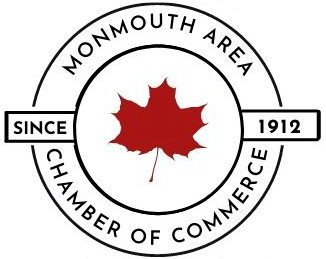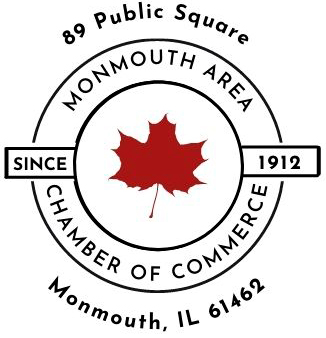People love a good ghost story and are seemingly always eager to embrace tales of legendary local hauntings, regardless of corroborating evidence.
Every year — particularly around Halloween — I receive inquiries about a site near Monmouth that is legendary in local lore for alleged supernatural occurrences. Known as “Crybaby Bridge,” it’s a small steel bridge spanning Cedar Creek near the stone quarry and the former Olmstead’s mill, four miles northwest of town.
Legend has it that a school bus full of children once plunged off the bridge, killing everyone aboard. Another story is that a young unwed mother once tossed her unwanted infant son off the bridge.
Needless to say, there is no evidence that either event ever occurred, but the stories are used to support an eerie phenomenon that some locals swear occurs at the bridge. They say if you drive your car onto the bridge and put it in neutral, tiny hands will push it across the bridge, even if you are headed uphill. It is also claimed that if you put talcum powder on your bumpers, prints of the hands will appear there.

Today’s photos, taken in 1940 by Monmouth photographer Paul Kobler before the original covered bridge was replaced by the current modern span, certainly could give you chills, suggesting a Headless Horseman might be ready emerge from its shadows. But two separate paranormal research teams have debunked any real hauntings.
Barb Huyser, a local ghost hunter and a member of the Small Town Ghost Team, said in a 2018 interview that her organization had found nothing to support the claims.
In 2012, an engineer for Caterpillar Inc. who founded the Peoria Paranormal Society, brought his team to investigate the bridge. Derek Waldschmidt, who developed a device to measure changes in electromagnetic frequency that he called the “Ghost Box,” said he actually did detect changes in frequency around the bridge, but his team could make no contact with spirits (nor their car move without its engine).
Interestingly, he did point out that one member of his team — a clairvoyant medium — reported seeing ghostlike visions during the visit, but not involving a school bus. She claimed to have witnessed a much older spirit in the form of a Native American paddling a canoe.
Not that tragic events haven’t happened in the vicinity. A grist mill and dam, which formerly stood near the bridge, were erected by Silas Olmstead in 1837. Over the ensuing decades, the site became a hugely popular picnic area, and it was not uncommon for church groups to bring groups of 100 or more young people there on hayracks, or for band concerts and ice cream socials to be staged nearby.
In July 1898, the 15-year-old son of attorney W. K. Stewart was diving off the dam with companions when his foot slipped on the logs and he slipped, hitting his head on the rocks in the water below. He fractured two of his vertebrae, which resulted in paralysis and death two days later.
And while not tragic in the same sense, I have previously written about a scandalous picnic that occurred at Olmsted’s mill in the summer of 1886, involving some of Monmouth’s most prominent business leaders. The bacchanalian affair, which allegedly involved intoxication and nudity, sparked public outrage and was the topic of many local sermons over the weeks that followed.

The term “Crybaby Bridge” did not originate in Monmouth, and a quick check of Wikipedia reveals that there are dozens of so-named bridges across the United States — all having similar backstories.
Moreover, Maryland folklorist Jesse Glass has charged that Crybaby Bridges are actually “fakelore” — hoaxes that are intentionally propagated via the internet. In 1999, he found nearly identical stories of escaped slaves and Black children having been murdered on bridges in Maryland and Ohio. The stories seemed to suddenly pop up online, and no amount of research turned up a historical basis in either state for their having occurred.

by Jeff Rankin
Editor and historian for Monmouth College. Avid researcher of western Illinois history for 40 years. FB and Twitter. jrankin@monmouthcollege.edu



